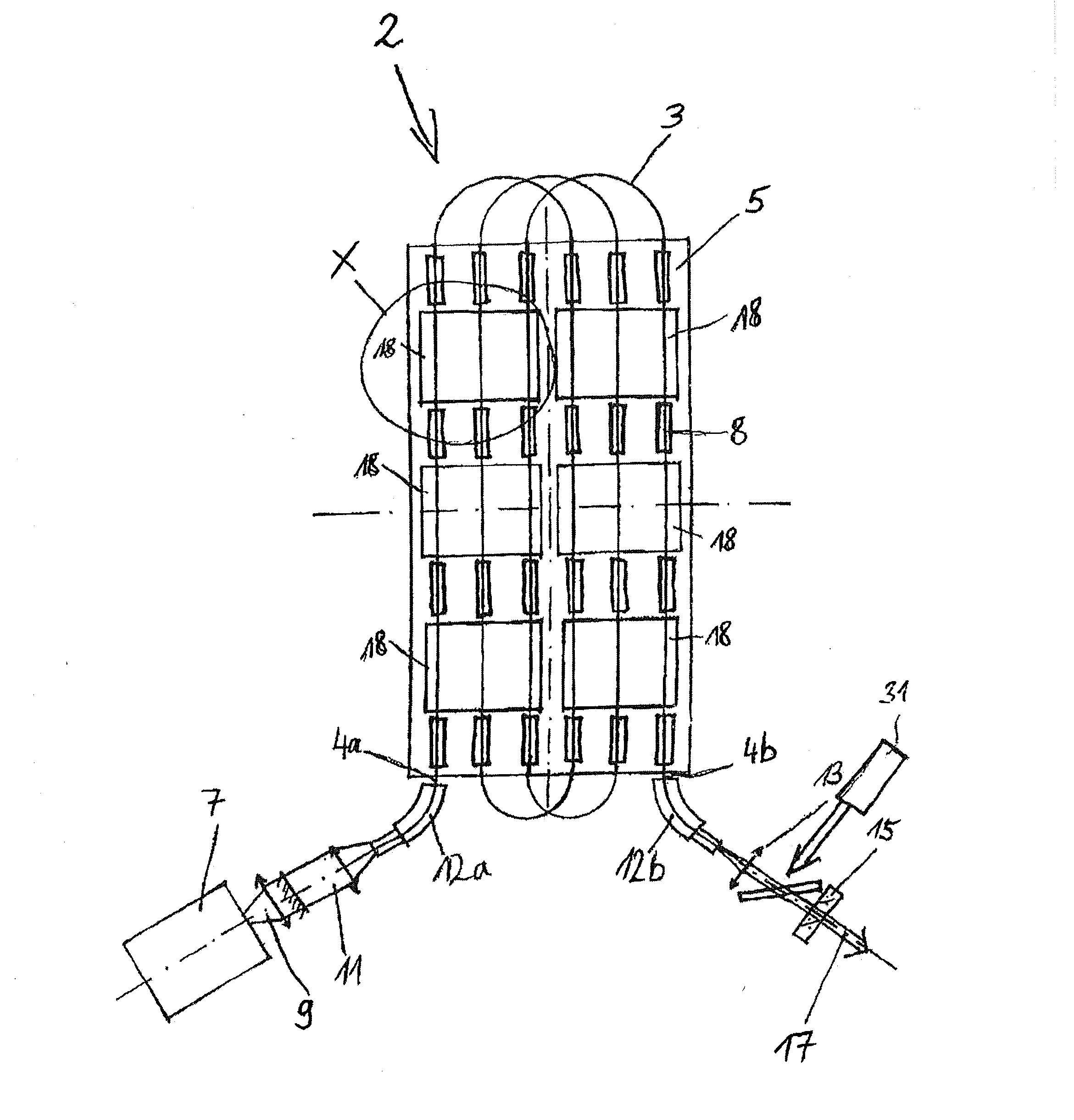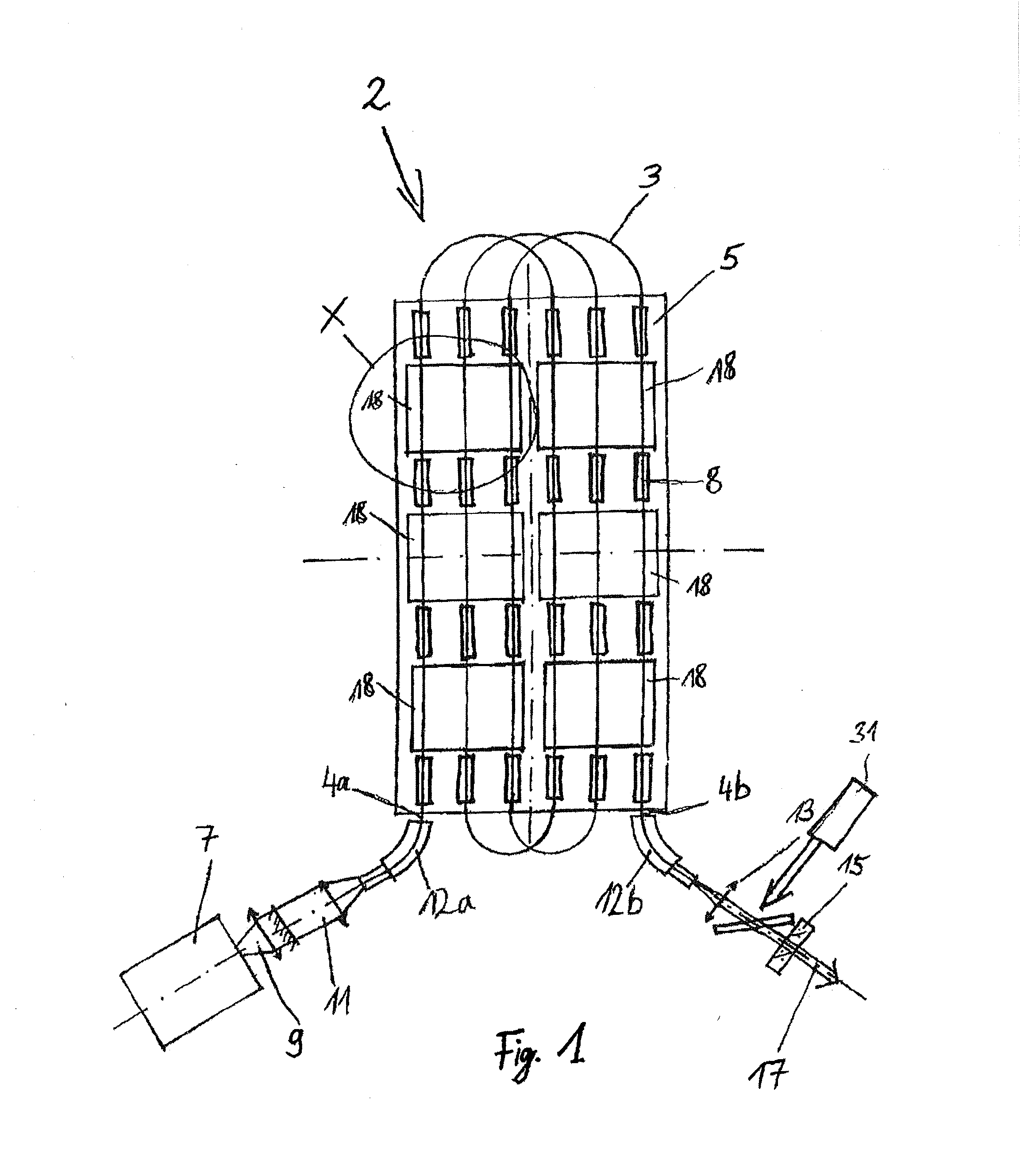Excitation unti fir a fiber laser
- Summary
- Abstract
- Description
- Claims
- Application Information
AI Technical Summary
Benefits of technology
Problems solved by technology
Method used
Image
Examples
Embodiment Construction
)
[0040]In describing the preferred embodiment of the present invention, reference will be made herein to FIGS. 1-8 of the drawings in which like numerals refer to like features of the invention.
[0041]FIG. 1 shows a top view of an excitation unit 2 in accordance with the invention. In addition to this excitation unit 2 the fiber laser contains a housing, an energy supply and a cooling system, which are not shown for reasons of clarity.
[0042]One can see an active fiber or excitation fiber 3, which in this embodiment is arranged in several loops over a base plate 5.
[0043]The excitation fiber 3 has a first fiber end 4a and a second fiber end 4b. “X” marks a region of an excitation housing 18, which will be explained in more detail in connection with FIG. 2.
[0044]A longitudinal pump light source 7 is shown which, for example, can be realized in the form of a diode laser and emits a longitudinal pump beam 9, which is coupled into the excitation fiber 3 in the region of the first fiber end...
PUM
 Login to View More
Login to View More Abstract
Description
Claims
Application Information
 Login to View More
Login to View More - R&D
- Intellectual Property
- Life Sciences
- Materials
- Tech Scout
- Unparalleled Data Quality
- Higher Quality Content
- 60% Fewer Hallucinations
Browse by: Latest US Patents, China's latest patents, Technical Efficacy Thesaurus, Application Domain, Technology Topic, Popular Technical Reports.
© 2025 PatSnap. All rights reserved.Legal|Privacy policy|Modern Slavery Act Transparency Statement|Sitemap|About US| Contact US: help@patsnap.com



